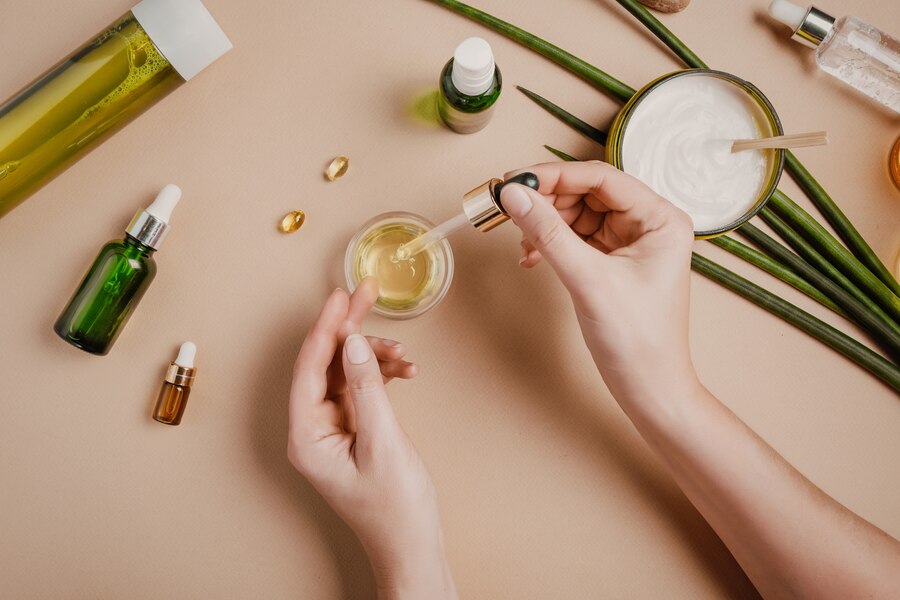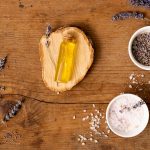Introduction to the Ingredient
A Miracle Elixir or Just Another Snake Oil?
Ah, behold the mighty Amla, a fruit that’s not just for snacking but for slathering on your skin and hair too! Let’s delve into the scientific saga of Amla oil and its plethora of perks. Amala Oil derived from the seeds of the Indian gooseberry (Emblica officinalis), is a prized beauty elixir with deep roots in Ayurvedic tradition. Renowned for its nourishing and rejuvenating properties, Amala Oil has made its way into modern beauty formulations, offering a wealth of benefits for the skin and hair.
What’s the Buzz About Amla Oil?
So, picture this: Amla trees, bearing the fruit of gods, packed with Vitamin C goodness and antioxidant magic. This edible gem has been chilling on trees, waiting to grace your hair and skin with its presence.
Amla Oil Unveiled: The Extraction Process
Unlike your run-of-the-mill oils, Amla oil isn’t just plucked from the fruit. Oh no, it’s a process, my friend. The Amla fruits are dried, soaked in carrier oils like coconut or sunflower, and bam! Green-hued Amla oil emerges, ready to revolutionize your hair and skin game.
Nutrient Breakdown: Amla Oil Edition
Prepare for a nutritional rollercoaster, folks! Amla oil packs a punch with its vitamin and mineral lineup:
- Vitamin C? Check, 800% of your recommended daily intake! Say hello to a boosted immune system.
- Iron? Yup, 6% of your daily needs. Iron man ain’t got nothing on Amla oil!
- Oh, and let’s not forget the proteins, carbs, and fats dancing their way into your hair follicles and skin cells.
Does Amla Oil Deliver?
You bet your hairbrush it does! Amla oil isn’t just a pretty face; it’s a hair and skin superhero. It strengthens hair follicles, prevents premature greying (adios, silver strands!), and even fights off those pesky scalp infections.
DIY Amla Oil: Because Why Not?
Who needs store-bought when you can DIY, am I right? Blend dried Amla pieces, add coconut oil, simmer, and voila! Your homemade elixir of hair and skin happiness is ready to rock.
How to Use Amla Oil?
Pour it, slather it, massage it – Amla oil works its magic however you want it. From scalp massages to skin hydration sessions, it’s a multitasking marvel.
Amla Oil: The MVP for Hair and Skin
Say goodbye to brittle hair, dry skin, and lackluster locks – Amla oil’s got your back (and your scalp)! It’s a conditioning champ, dandruff destroyer, and even promotes beard growth for the gents.
Key Benefits
From boosting brain health to battling diabetes, Amla oil isn’t just a beauty icon – it’s a health warrior. Heart health, immune system support, and even tumor prevention – Amla oil’s got your back, inside and out. Amala Oil boasts a rich array of benefits for beauty and skincare:
- Antioxidant Protection: It is packed with potent antioxidants that combat free radicals, helping to prevent premature aging and damage caused by environmental stressors.
- Hydration and Nourishment: Amala Oil deeply moisturizes the skin and hair, promoting a soft, supple texture and a radiant complexion.
- Skin Brightening: Regular use of Amala Oil can help reduce hyperpigmentation, resulting in a more even skin tone.
- Hair Strength and Shine: Amala Oil nourishes the hair and scalp, enhancing hair strength, luster, and manageability.
Usage in Beauty Products
Amala Oil is featured in various beauty products, including:
- Facial Oils and Serums: It is a common ingredient in facial oils and serums designed to nourish and revitalize the skin.
- Hair Oils: Amala Oil is often used as a primary ingredient in hair oils for deep conditioning and hair health.
- Anti-aging Formulations: It can be found in anti-aging creams and lotions to combat signs of aging and promote skin firmness.
- Brightening Masks: Some brightening masks incorporate Amala Oil to improve skin tone and radiance.
Safety and Precautions
Pfft, hardly any! Just watch out for adulterated versions and resist the temptation to chug it down like a health potion. Moderation is key, folks. Amala Oil is generally safe for topical use and is well-tolerated by most individuals. However, if you have sensitive skin or a known allergy to the ingredients, it’s advisable to conduct a patch test before using products containing Amala Oil. Always follow product instructions carefully.
Compatibility with Other Ingredients
Amala Oil is highly compatible with a wide range of skincare and haircare ingredients, including other natural oils, vitamins, and botanical extracts. It can be integrated into various beauty formulations to enhance their efficacy.
Scientific and Research Findings
While traditional uses of Amala Oil have been well-documented, modern scientific research continues to support its benefits in beauty and skincare:
- A study published in the “Journal of Cosmetic Dermatology” highlighted the skin-lightening and antioxidant properties of Amala Oil, making it a promising ingredient for addressing hyperpigmentation and skin aging.
- Research in the “International Journal of Trichology” demonstrated that Amala Oil has a strengthening effect on hair, reducing hair loss and improving hair density and thickness.
Common Variants or Derivatives
Amala Oil is primarily derived from the Indian gooseberry (Emblica officinalis) seeds. Different brands may offer variations in concentration or formulations, but the core ingredient remains consistent.
References
- Telang, P. S. (2013). Vitamin C in dermatology. Indian Dermatology Online Journal, 4(2), 143-146.
- Pullar, J. M., Carr, A. C., & Vissers, M. C. (2017). The roles of Vitamin C in skin health. Nutrients, 9(8), 866.
Conclusion
Amala Oil, with its nourishing and rejuvenating properties, offers a wealth of benefits for the skin and hair. From its potent antioxidant protection to its ability to enhance product absorption and brighten skin, Amala Oil is a valuable addition to any skincare routine. As always, it’s important to use products as directed and consult with a skincare professional for personalized advice.
Frequently Asked Questions (FAQs)
- What is Amala Oil, and what benefits does it offer for the skin? Amala Oil, derived from the Amalaki fruit, is rich in antioxidants and vitamins. It nourishes and rejuvenates the skin, promoting a healthy and radiant complexion.
- Is Amala Oil suitable for all skin types? Yes, Amala Oil is generally suitable for all skin types, including sensitive skin. Its lightweight and non-comedogenic nature make it a versatile addition to various skincare routines.
- How can Amala Oil be incorporated into a skincare routine? Amala Oil can be used as a standalone facial oil, mixed with moisturizers, or added to DIY face masks. It effectively hydrates the skin, diminishes fine lines, and provides a natural glow.
It’s not just a fruit; it’s a lifestyle. Amla oil isn’t just another beauty trend; it’s a centuries-old secret weapon for hair, skin, and overall wellness. So, next time you see those green gems hanging from the trees, remember – Amla oil is waiting to transform you into the radiant being you were always meant to be!



